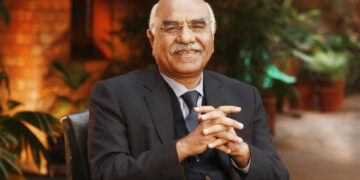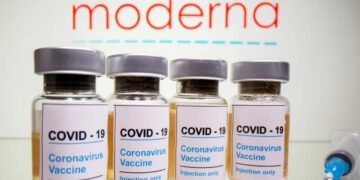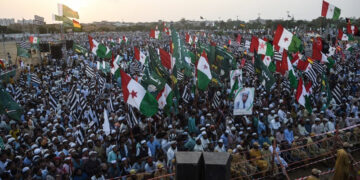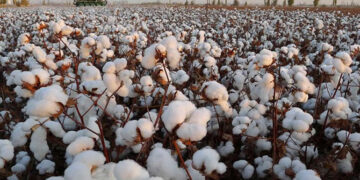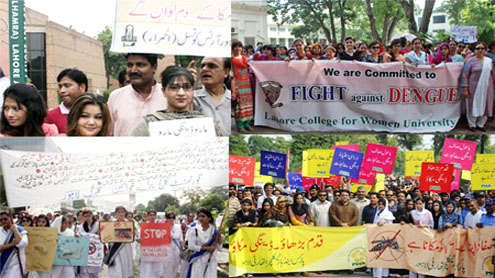 Afghanistan is the world’s number one grower of poppies – and the country has now held this designation for an uninterrupted decade. Afghan opiates supply more than 90 per cent of European and Central Asian markets. Nothing impedes the narcotics trade, not the Karzai government declaring it illegal, not the Qur’an forbidding it, attempts to eradicate it by Governor-Led Eradication (GLE) teams, or the intervention of the US Drug Enforcement Administration.The opium economy makes up an estimated 35 per cent of Afghanistan’s GDP. It is vital to the livelihoods of millions of Afghans who work all along the poppy chain: from farming families, to heroin lab workers, to truckers who smuggle the drugs across borders.Argibusiness or terrorism?
Afghanistan is the world’s number one grower of poppies – and the country has now held this designation for an uninterrupted decade. Afghan opiates supply more than 90 per cent of European and Central Asian markets. Nothing impedes the narcotics trade, not the Karzai government declaring it illegal, not the Qur’an forbidding it, attempts to eradicate it by Governor-Led Eradication (GLE) teams, or the intervention of the US Drug Enforcement Administration.The opium economy makes up an estimated 35 per cent of Afghanistan’s GDP. It is vital to the livelihoods of millions of Afghans who work all along the poppy chain: from farming families, to heroin lab workers, to truckers who smuggle the drugs across borders.Argibusiness or terrorism?
Afghanistan excels at poppy cultivation and the manufacturing of raw opium gum into a range of narcotics. Narcotics are global commodities that live double lives. They are sold legally to the pharmaceutical industry to manufacture into morphine and codeine for medicinal use (pain control and anesthesia) and are sold to the illegal market in the form of smokable opium and injectable heroin. If the production and sale of opiates were legal, such as the drugs caffeine and nicotine, Afghanistan wouldn’t have a cabal of national and international narcotics control forces waging a violent drug war that criminalises ordinary Afghans trying to survive in a war-torn economy and brands the country an outlaw, failed “narco-state”.
The drug warriors in the DEA, the White House and the Pentagon have intentionally conflated the war on drugs and the war on terror in Afghanistan. Call it a “twofer”, more bang for the billions of bucks being spent to wage wars that have no exit strategies because they can never be won. Pairing drug hysteria with the fear of terrorism is powerful propaganda for the United States, and recasts and promotes what is in reality an imperialist war as a war against a “narco-insurgency” or “narco-terrorism”. The ancient and pain relieving plant papaver somniferum [the opium poppy] is now referred to as a narco-terrorism crop. It is agribusiness, not terrorism.
US drug warriors complain that the Taliban is funded by profits from narcotics and it is – as are most armed opposition groups and the Karzai government. WikiLeaks documents corroborate the connection. In one cable, the US ambassador to Afghanistan, Karl Eikenberry, stated that Ahmed Wali Karzai, President Karzai’s brother, is “widely understood to be corrupt and a narcotics trafficker”.
Other documents reveal former Defence Minister Muhammad Qasim Fahim was involved in the drug trade. He was also a CIA asset and received millions in cash. Fahim’s predecessor, Ahmed Zia Massoud, profited from the drug trade, too. On a “capital flight”, Massoud flew into Dubai with $52 million in cash. General Mohammed Daud, the former head of the anti-drug section of the Counternarcotics Police of Afghanistan (CNPA) provided protection for drug smugglers and accepted bribes. The fact is that officials high up in the Karzai government, as well as police commanders and regional governors fuel the drug trade and profit enormously from it. Why aren’t they attacked and prosecuted with the same zeal as the Taliban?
The pervasive corruption in the illicit drug trade should surprise no one. It is rampant in every country because the black market creates huge profits that even the most pious cannot resist. In Afghanistan, drugs and baksheesh [a term which sometimes refers to charitable giving or tipping, but in this case is simply “bribery”] are estimated to be the two largest income generators, accounting for $3 billion and $2.5 billion per year, respectively.
The United States is leading and funding the war on drugs in Afghanistan. From 2001 through 2009, the US Congress approved $2.9 billion in regular and supplemental counternarcotics foreign assistance and defence funding for Afghanistan.Under the Obama Administration, US counternarcotics programs have become increasingly militarised. The DEA is centrally involved in counternarcotics operations with the exception of the eradication of poppy fields; that is left to the GLE teams. For all intents and purposes, the DEA operates as a division of the US military. DEA agents train with US Navy SEALS and special operations units, share intelligence and conduct joint operations. The goals of the DEA and the US military bleed into one another: Capture or kill high-value drug traffickers suspected of aiding and financing the Taliban.
DEA teams called Forward-Deployed Advisory and Support Teams (FAST) carry out drug raids. The FAST teams work with Navy SEALS and the CNPA to carry out these raids which are similar to the “night raids” conducted by US military forces. Homes and compounds are destroyed in the search for drugs and weapons. Afghan men are beaten, humiliated, killed and disappeared into detention centres or prisons.In 2008, FASTs were deployed to Spin Boldak in Kandahar province to burn piles of hashish in areas under Taliban control. And for the first time, in 2009, US troops engaged in direct support of a forced eradication mission as part of a security detachment for Afghan counternarcotics forces in the Nadi-Ali district in Helmand province. The operation was part of a NATO offensive to capture drug lords and destroy drug labs.
The DEA doesn’t plan on leaving Afghanistan anytime soon. Michelle Leonhart, head administrator of the DEA, bragged: “We don’t get bogged down with the question of how long we’re going to be there. Someone has to go after the biggest and the baddest, someone has to put these traffickers in jail, someone has to stop the flow of terrorist financing – and it’ll be the DEA.”The Narco-Terrorism Enforcement Act of 2005 is an amendment to the USA PATRIOT Act. Representative Henry Hyde explained: “My amendment creates a new crime that will address and punish those who would use these illicit narcotics to promote and support terrorism … The nexus between terrorism and illicit narcotics grows more and more…” The law is being used to prosecute Afghans for involvement in the “drug-terror” nexus.
In disgusting displays of hubris carefully curated for sensationalised media coverage by stenographers in the mainstream press, alleged Taliban supporters and drug kingpins have been extradited to New York City to stand trial. As if any Afghan accused of narco-terrorism could ever get a fair trial in the wake of 9/11, in the city of Ground Zero.
Legalisation is a solution
The cases of Hajji Bashir and Hajji Juma show the duplicity of the DEA and CIA. Both men were informants and provided intelligence on Taliban and drug smuggling operations. The CIA, of course, has a long and sordid history of complicity in the narcotics trade in Afghanistan. At clandestine meetings with government agents, they received large amounts of cash in exchange for information. Then, in a classic DEA/CIA double-cross, and to prove they are tough on terrorism and the Taliban, Bashir and Juma were arrested. Bashir was lured to New York under false pretenses and Juma was extradited from Indonesia. The formerly feted and well financed Afghans were now demonised as narco-terrorist-Taliban. In 2009, Bashir was sentenced to life in prison. Juma is awaiting trial.
The war on Afghan poppy can never be won. But there is a solution to the so-called poppy problem: License farmers to cultivate poppy and manufacture morphine to sell to the pharmaceutical industry. And secondly, to eliminate the black market, legalise and regulate the consumption of all drugs. Licensing and legalisation would have immediate and life changing benefits for the people of Afghanistan: Millions would no longer be considered criminals, violence would decrease, the salaam system of crop payment that rips off poppy farmers would be eliminated, drug profits would stay in the country, and the barbaric practice of selling young girls and women into sexual slavery to pay drug debts known as “opium brides” would end.But the drug warriors don’t want that because they’re addicted to the drug wars and they need narco-terrorism to justify their imperialist fix. – Aljazeera





